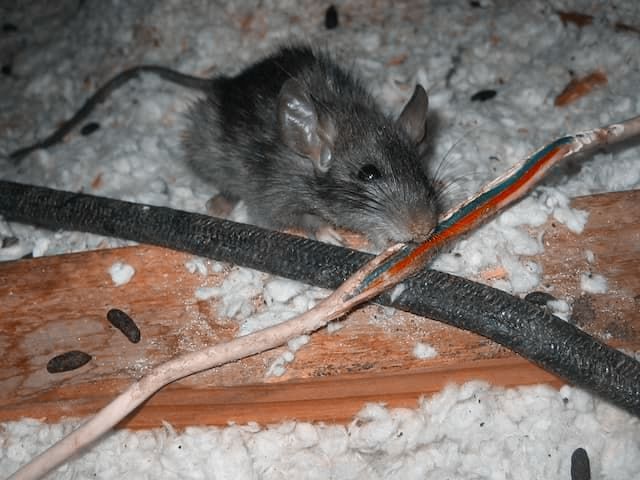
Rodent In Attics
The Rodent Pros Offer rodent trapping, rodent removal, rodent exclusion, rodent sanitation and rodent remediation services to all cities within a 50 miles radius of Tampa Florida.
To Call and schedule a free inspection click here
Rats are known to inhabit attics for several reasons, which primarily revolve around the suitability of the environment for their survival and reproduction:
- Shelter and Protection: Attics provide rats with a sheltered and relatively undisturbed environment. They are safe from predators such as owls, hawks, and ground-dwelling predators like cats and dogs. Attics are also typically warmer than the outdoors during colder months, providing rats with a comfortable habitat.
- Access to Food: Rats are opportunistic feeders and will exploit available food sources. Attics often contain stored goods, insulation materials (which can be chewed for nesting), and sometimes pet food or bird seed. If food sources are accessible, rats will establish themselves to take advantage of these resources.
- Water Availability: Rats need access to water for survival. Attics may provide moisture from leaking pipes or condensation, which can sustain a rat population without requiring them to venture far from their nest.
- Nesting Sites: Rats are nest builders and prefer secluded spots to raise their young. Attics offer ample nesting materials such as insulation, fabric, and cardboard, making them ideal locations for breeding and raising offspring.
- Proximity to Human Activity: Attics are often close to human habitation, providing rats with easy access to potential food sources from kitchens, garbage, and outdoor feeding stations (e.g., bird feeders). This proximity reduces the distance they need to travel to find food, which conserves energy and reduces exposure to predators.
- Nocturnal Behavior: Rats are nocturnal animals, meaning they are most active during the night when human activity is minimal. Attics offer a quiet, dark environment during the day, allowing rats to rest undisturbed before becoming active at night to forage for food.
- Entry Points: Attics typically have numerous entry points for rats to access. These can include gaps around pipes, vents, or damaged areas of the roof or walls. Once inside, rats can navigate through walls and crawl spaces to reach the attic, where they establish their nests.
In summary, attics provide rats with shelter, warmth, food, water, and protection from predators, making them highly attractive habitats for these rodents. Effective pest management strategies involve sealing entry points, removing food sources, and implementing traps or rodenticides under controlled conditions to mitigate rat infestations in attics.

